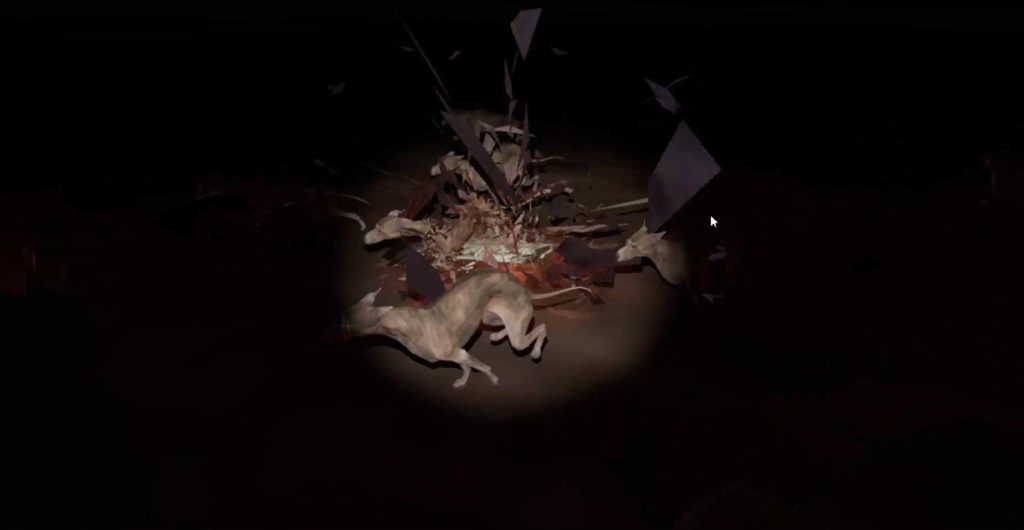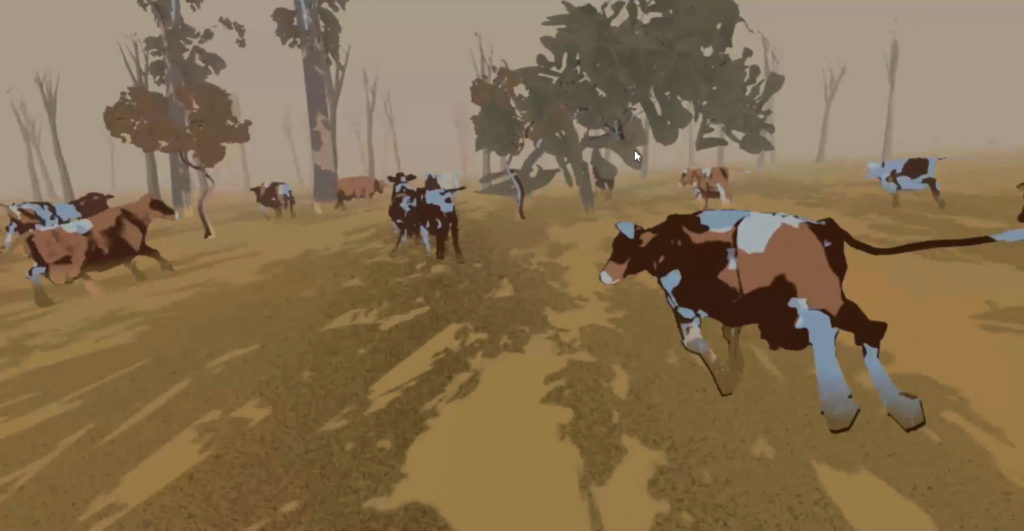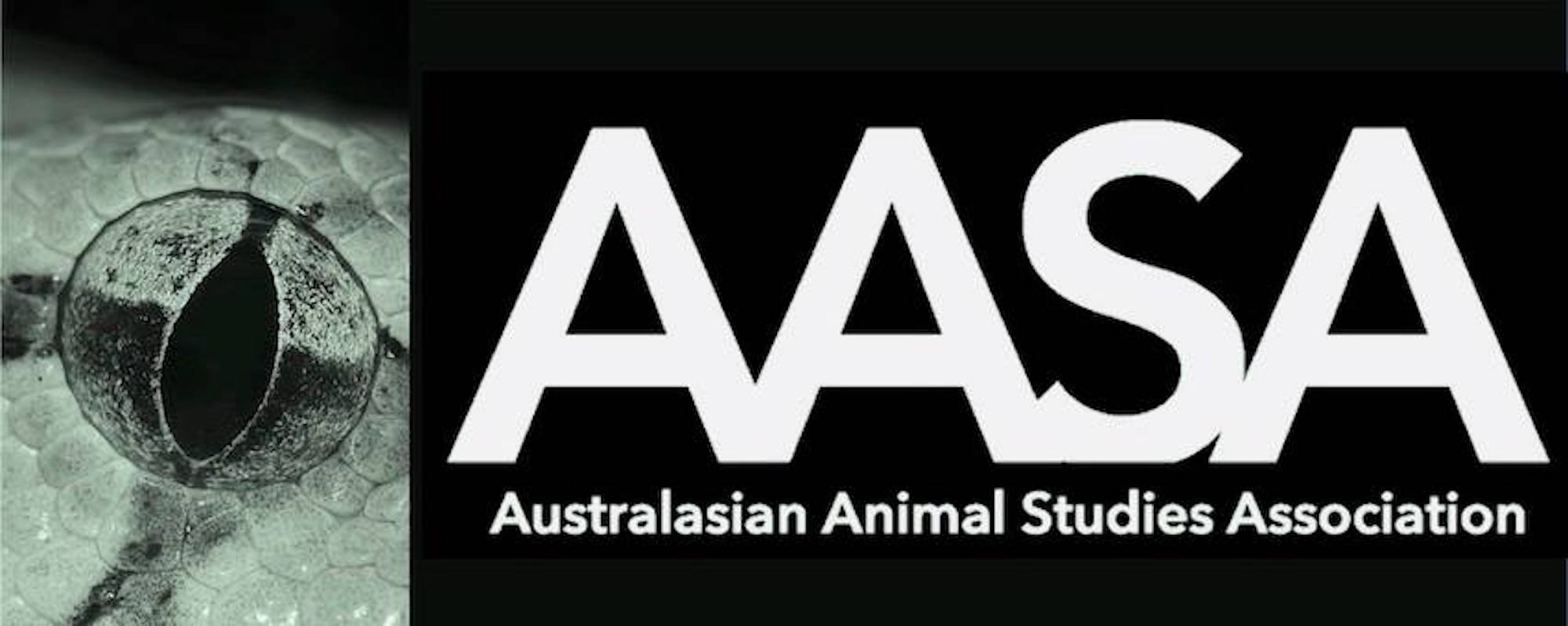
ARTIST STATEMENT:
My first foray into Virtual Reality (VR), Flocking Whippet explores this relatively new technology while unsettling assumptions that it can represent the world with unprecedented fidelity.
Flocking Whippet is a dark VR experience in which the viewer controls unlikely parts of the environment, heightening their sense of uncertainty. By looking around, the viewer’s gaze directs the flocks of whippets as well as shifts in the soundtrack, and ultimately collapses and explodes the mesh of the animated dogs.

Using motion capture data and flocking algorithms, Cow Herd is another VR experience that explores questions of identity and representation. After putting on the headset, a viewer of Cow Herd notices a group of cows who seem to be aware of the viewer’s presence. At first the cows are inquisitive but they soon become startled and begin to run. Swept up by the momentum, the viewer follows, becoming one of the herd – becoming cow.
In the world of computer animation there are many ‘off the shelf’ tools that can be used to simulate animal behaviour, but for Cow Herd I created flocking algorithms from scratch (spending several weeks immersed in C# programming). There is something about working with code to bring a flock or herd of animals to life that reminds me of my experience as a painter. With brushes and paint, I would coax an image from the canvas while trying to ‘keep the paint alive’ and respond to accidents. The best paintings seemed to emerge through a collaborative process where I appreciated the paint as a lively medium.

While making Cow Herd I never tired of tweaking algorithms and playing the animation, because the cows seemed to have a mind of their own and ran in a new formation every time. Based on the computer graphics paper written in 1987 by Craig Reynolds, the behaviour of individual cows in this artwork are defined by a few simple rules from which complex patterns emerge. Flocking algorithms, like the increasing capabilities of new technologies more generally, are fascinating but it’s important not to mistake the liveliness of a medium (or technology) for animal life itself which is complex, creative and could never be entirely understood or fully represented.
ARTIST:
Gina Moore is a visual artist and lecturer in the Animation program at RMIT University. As a painter, sculptor, illustrator and animator, Gina has been employed in a variety of sectors including public art, architectural visualisation, and advertising. Since 1990 she has exhibited work utilizing a variety of media including painting, sculpture, animated film and Virtual Reality.
After many years as a visual artist using traditional media, Gina was introduced to computer graphics in 2001. Throughout the next 15 years (while employed as an animator in the advertising industry) she became aware of assumptions implicit in the design, marketing and orthodox use of 3D animation software. Completed in 2016, Gina’s PhD research investigates these assumptions and develops novel approaches to 3D software in order to expand its associated practices and visual styles. Broadly speaking, Gina’s work embraces the generative potential of computer graphics technology and investigates the various ways that emerging practices might work against anthropocentrism.
http://www.ginamoore.com.au/
http://conversational3d.com/
